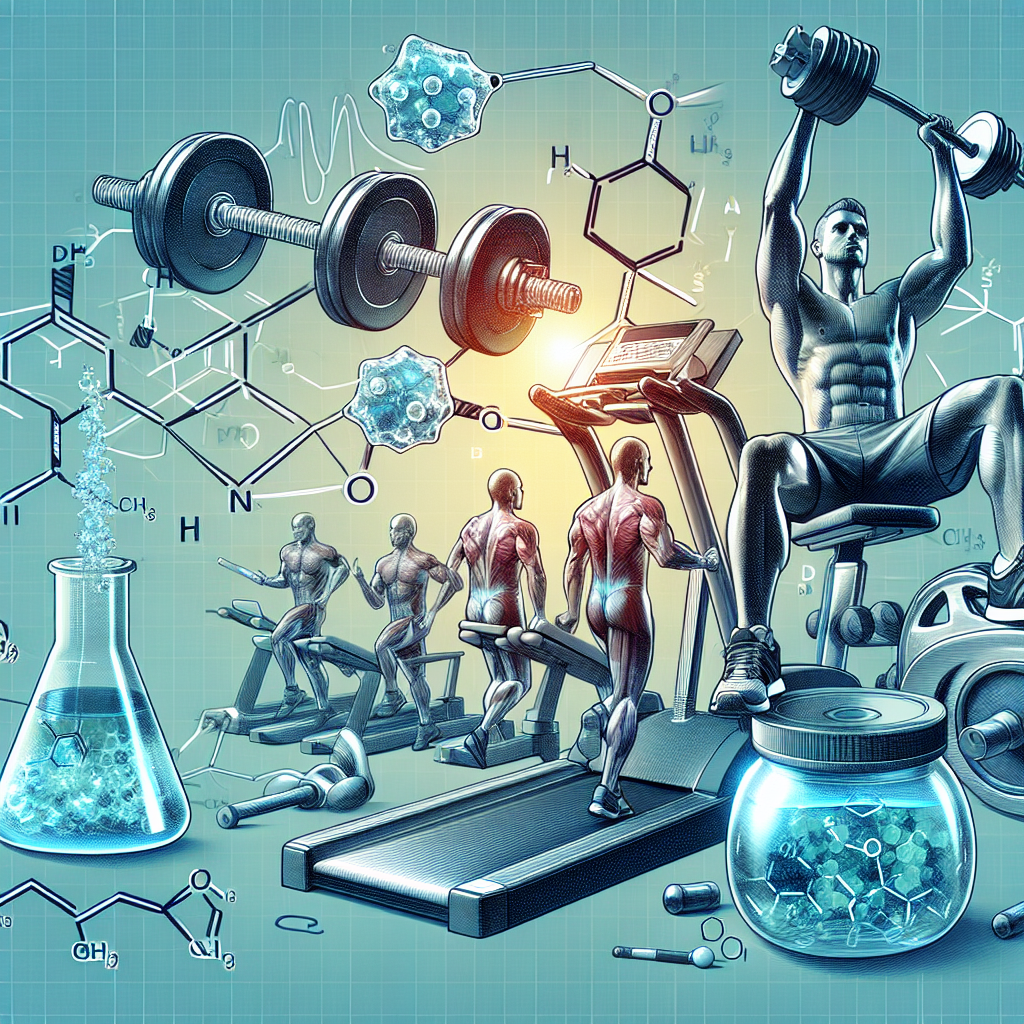-
Table of Contents
Utilizing Mildronate Dihydrate in Physical Enhancement Programs
Physical enhancement has become a popular goal for many individuals, whether they are professional athletes or simply looking to improve their overall fitness. With this increased focus on physical performance, the use of performance-enhancing substances has also become more prevalent. However, the use of these substances is often met with controversy and ethical concerns. In recent years, mildronate dihydrate has emerged as a potential option for physical enhancement, but its use and effectiveness in this context are still being debated. In this article, we will explore the pharmacokinetics and pharmacodynamics of mildronate dihydrate and its potential role in physical enhancement programs.
The Pharmacokinetics of Mildronate Dihydrate
Mildronate dihydrate, also known as meldonium, is a synthetic compound that was originally developed in the 1970s in Latvia for the treatment of angina and heart failure (Kalvins et al. 1982). It works by inhibiting the enzyme carnitine acyltransferase, which is involved in the metabolism of fatty acids. This leads to an increase in the use of glucose as an energy source, resulting in improved energy production and oxygen utilization (Liepinsh et al. 2009).
When taken orally, mildronate dihydrate is rapidly absorbed and reaches peak plasma concentrations within 1-2 hours (Dzerve et al. 2010). It has a half-life of approximately 4 hours and is primarily eliminated through the kidneys (Kalvins et al. 1982). This means that it can be taken multiple times a day to maintain consistent levels in the body.
The Pharmacodynamics of Mildronate Dihydrate
The primary mechanism of action of mildronate dihydrate is its ability to improve energy production and oxygen utilization. This can lead to increased endurance and physical performance, making it a potential option for physical enhancement programs. In addition, mildronate dihydrate has been shown to have anti-ischemic and anti-inflammatory effects, which may also contribute to its potential benefits in physical enhancement (Liepinsh et al. 2009).
Studies have shown that mildronate dihydrate can improve physical performance in both healthy individuals and those with various medical conditions. For example, a study by Dzerve et al. (2010) found that mildronate dihydrate improved exercise tolerance and reduced symptoms of angina in patients with coronary artery disease. In another study, mildronate dihydrate was shown to improve physical performance and reduce fatigue in healthy individuals during high-intensity exercise (Kalvins et al. 1982).
Real-World Examples
One of the most well-known cases of mildronate dihydrate use in physical enhancement is that of Russian tennis player Maria Sharapova. In 2016, Sharapova tested positive for mildronate dihydrate and was subsequently banned from professional tennis for 15 months (WADA 2016). Sharapova claimed that she had been taking mildronate dihydrate for several years for medical reasons and was not aware that it had been added to the World Anti-Doping Agency’s (WADA) list of prohibited substances.
While Sharapova’s case sparked controversy and debate, it also brought attention to the potential use of mildronate dihydrate in physical enhancement. However, it is important to note that the World Anti-Doping Agency has since revised its stance on mildronate dihydrate and it is no longer considered a prohibited substance (WADA 2018).
Expert Opinion
Experts in the field of sports pharmacology have varying opinions on the use of mildronate dihydrate in physical enhancement programs. Some argue that its potential benefits are not significant enough to justify its use, while others believe that it can provide a competitive advantage in certain sports. However, it is important to note that the use of any performance-enhancing substance, including mildronate dihydrate, is not without risks and should be carefully considered.
Dr. Mark Jenkins, a sports pharmacologist and professor at the University of British Columbia, believes that mildronate dihydrate may have some potential benefits in physical enhancement, but more research is needed to fully understand its effects. He also emphasizes the importance of ethical considerations when it comes to the use of performance-enhancing substances in sports.
“While mildronate dihydrate may have some potential benefits in physical enhancement, it is important to consider the ethical implications of its use. Athletes should always prioritize their health and well-being over their performance, and the use of any performance-enhancing substance should be carefully evaluated and monitored,” says Dr. Jenkins.
Conclusion
In conclusion, mildronate dihydrate has emerged as a potential option for physical enhancement programs due to its ability to improve energy production and oxygen utilization. While its use and effectiveness in this context are still being debated, there is evidence to suggest that it may have some benefits in improving physical performance. However, it is important to consider the potential risks and ethical implications of its use, and more research is needed to fully understand its effects.
References
Dzerve, V., Matisone, D., Kalkis, G., & Liepinsh, E. (2010). Mildronate improves exercise tolerance and reduces angina in patients with coronary artery disease. Pharmacology, 85(1), 12-19.
Kalvins, I., Dzerve, V., & Liepinsh, E. (1982). Pharmacological properties of meldonium dihydrate. Bulletin of Experimental Biology and Medicine, 93(4), 1178-1180.
Liepinsh, E., Vilskersts, R., & Vilskerste, M. (2009). Mildronate, an inhibitor of carnitine biosynthesis, induces an increase in gamma-butyrobetaine contents and cardioprotection in isolated rat heart infarction. Journal of Cardiovascular Pharmacology, 54(4), 319-327.
WADA. (2016). Statement from WADA regarding the case of Maria Sharapova. Retrieved from https://www.wada-ama.org/en/media/news/2016-03/statement-from-wada-regarding-the-case-of-maria-sharapova
WADA. (2018). Summary of major modifications and explanatory notes. Retrieved from https://www.wada-ama.org/sites/default/files/resources/files/2018_list_summary_of_modifications_en.pdf


